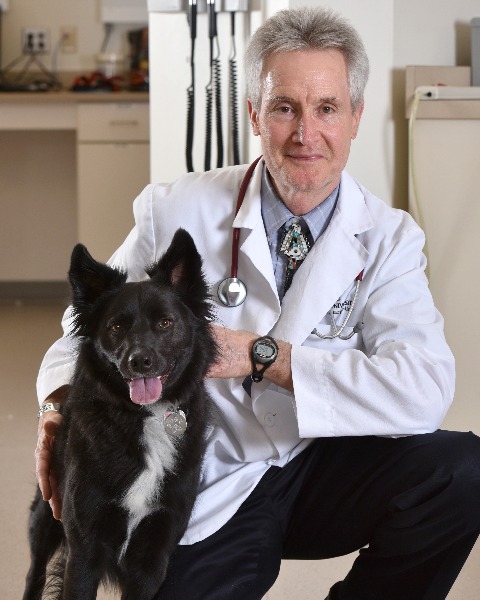Small Animal Internal Medicine
In Person Only
Ultrastructural Changes in Colonic Mucosa of Dogs with Chronic Inflammatory Enteropathy Treated with Synbiotics
Friday, June 7, 2024
4:30pm - 5:00pm CT
Location: MCC 103 A
CE: 0.5

Albert E. Jergens, DVM, MS, PhD, DACVIM, AGAF (he/him/his)
Professor of Internal Medicine
Iowa State University
Ames, AL, United States
Research Report Presenter(s)
Abstract:
Background: Synbiotics may be used to reduce intestinal inflammation and mitigate dysbiosis in dogs with chronic inflammatory enteropathy (CIE). Previous studies have not evaluated the colonic mucosal ultrastructure of dogs with active CIE treated with synbiotics.
Aims: To characterize ultrastructural changes in the colonic mucosa of dogs with CIE at diagnosis and following synbiotic treatment using transmission electron microscopy (TEM). Animals: Twenty-four client-owned dogs diagnosed with CIE were randomized to receive hydrolyzed diet (placebo [PL]) or hydrolyzed diet with synbiotic-IgY (SYN).
Methods: Endoscopic biopsies of the colon were collected, fixed in 1% paraformaldehyde and 3% glutaraldehyde in 0.1M sodium cacodylate buffer, and routinely processed. Thick (1.5um) and thin (50nm) sections were obtained using a Leica UC6 ultramicrotome. TEM images were collected using a 200kV JEOL JSM 2100 scanning transmission electron microscope. Ultrastructural changes in microvilli length (MVL), mitochondria (MITO), and endoplasmic reticulum (ER) were compared between PL and SYN treatment groups using a two-tailed Student’s t-test with P < 0.05 considered significant.
Results: The extent of mucosal ultrastructural pathology varied in individual dogs pre- versus post-treatment. While morphologic changes to enterocytes, MVL, MITO, and ER were observed, significant differences in these ultrastructural parameters were not found between PL and SYN dogs pre-treatment. In contrast, important ultrastructural changes were observed post-treatment with SYN-treated dogs having significant (P < 0.05) ultrastructural improvement to MVL, MITO, and ER injury scores as compared to values observed in PL-treated dogs.
Conclusions: Dogs with CIE exhibit colonic ultrastructural pathology that significantly improves after treatment with synbiotic-IgY.
Background: Synbiotics may be used to reduce intestinal inflammation and mitigate dysbiosis in dogs with chronic inflammatory enteropathy (CIE). Previous studies have not evaluated the colonic mucosal ultrastructure of dogs with active CIE treated with synbiotics.
Aims: To characterize ultrastructural changes in the colonic mucosa of dogs with CIE at diagnosis and following synbiotic treatment using transmission electron microscopy (TEM). Animals: Twenty-four client-owned dogs diagnosed with CIE were randomized to receive hydrolyzed diet (placebo [PL]) or hydrolyzed diet with synbiotic-IgY (SYN).
Methods: Endoscopic biopsies of the colon were collected, fixed in 1% paraformaldehyde and 3% glutaraldehyde in 0.1M sodium cacodylate buffer, and routinely processed. Thick (1.5um) and thin (50nm) sections were obtained using a Leica UC6 ultramicrotome. TEM images were collected using a 200kV JEOL JSM 2100 scanning transmission electron microscope. Ultrastructural changes in microvilli length (MVL), mitochondria (MITO), and endoplasmic reticulum (ER) were compared between PL and SYN treatment groups using a two-tailed Student’s t-test with P < 0.05 considered significant.
Results: The extent of mucosal ultrastructural pathology varied in individual dogs pre- versus post-treatment. While morphologic changes to enterocytes, MVL, MITO, and ER were observed, significant differences in these ultrastructural parameters were not found between PL and SYN dogs pre-treatment. In contrast, important ultrastructural changes were observed post-treatment with SYN-treated dogs having significant (P < 0.05) ultrastructural improvement to MVL, MITO, and ER injury scores as compared to values observed in PL-treated dogs.
Conclusions: Dogs with CIE exhibit colonic ultrastructural pathology that significantly improves after treatment with synbiotic-IgY.
